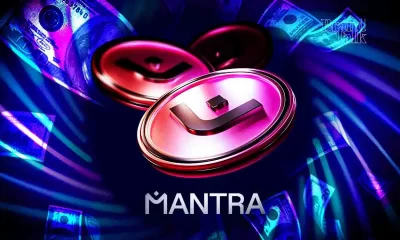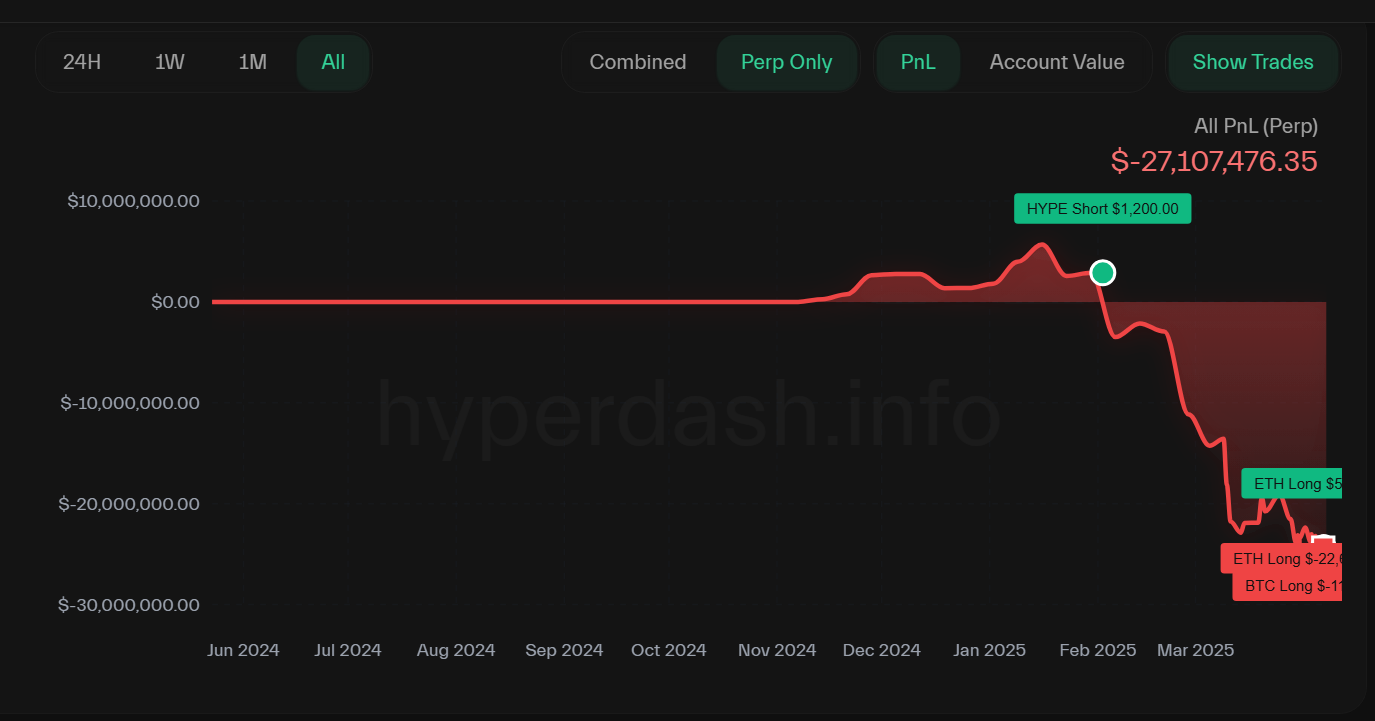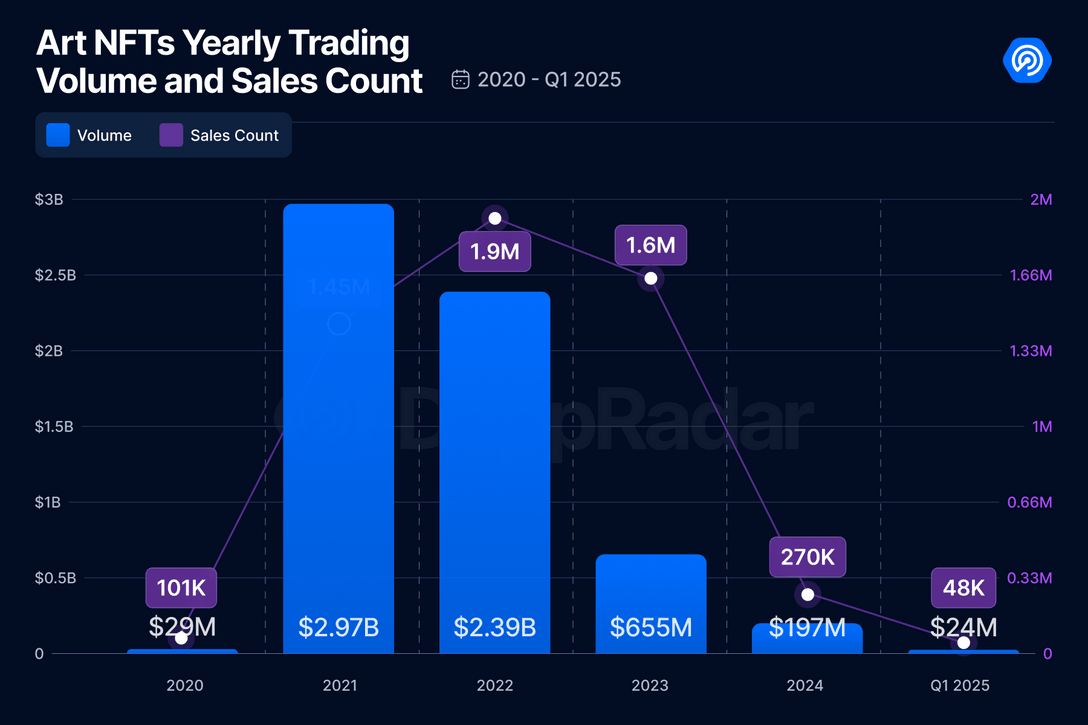Crypto scam
Malicious Google ad campaign redirects crypto users to fake Pudgy Penguins website
Published
4 months agoon
By
admin

Blockchain security experts have uncovered a new scam using malicious Google ads to trick crypto users into visiting a fake Pudgy Penguins website.
A new scam targeting crypto users has been uncovered, with analysts at blockchain security firm Scam Sniffer warning that bad actors are seemingly exploit Google‘s ad network to post malicious ads.
In an X thread on Wednesday, the analysts explain that malicious ads contain suspicious JavaScript code that checks if the viewer has a crypto wallet. If a wallet is detected, the code redirects users to a fake website that mimics the legit website of Pudgy Penguins, a non-fungible token collection of 8,888 unique tokens depicting chubby cartoon penguins.
URGENT SECURITY ALERT
1/6 A user reported being redirected to a fake @pudgypenguins website through a Singapore news portal. Our investigation revealed this is part of a larger malicious advertising campaign. pic.twitter.com/Izv3f87WrX
— Scam Sniffer | Web3 Anti-Scam (@realScamSniffer) December 25, 2024
Once users are redirected to the fake website, scammers could steal personal information or lure victims into connecting their wallets, allowing unauthorized access to withdraw funds.
The current target of the scam is Pudgy Penguins users, but Scam Sniffer has warned that this method could easily be adapted to target other crypto projects as well. The security experts advise crypto investors to always carefully check website URLs to avoid falling for similar scams. To stay safe, Scam Sniffer recommended using ad blockers, considering a separate browser for web3 activities, and double-checking URLs before connecting a wallet.
The latest scam is part of a larger trend where bad actors exploit Google Ads to deceive crypto users. In one instance, scammers mimicked the Revoke Cash recovery service by using fraudulent ads that redirected users to a fake site designed to steal funds. In another case, Google Ads were used to promote a fake version of the Whales Market crypto platform, redirecting users to a fraudulent site where their wallets were compromised.
Source link
You may like


Crypto markets ‘relatively orderly’ despite Trump tariff chaos: NYDIG


Fartcoin ‘Hot Air Rises’ — $1.50 Just A Whiff Away


What happened to the RWA token?


Crypto Strategist Sees Solana-Based Memecoin Surging Higher, Says One AI Altcoin Flashing Strong Chart


Mantra Team Responds As The OM Token Price Crashes Over 80% In 24 Hours


This Week in Crypto Games: Gaming Tokens Crash Out, Eve Frontier Opens Up
crypto liquidations
ZKasino scammer wallet lost $27.1m after long position ETH close
Published
7 days agoon
April 7, 2025By
admin
An account linked to ZKasino, a gambling platform that stole more than $30 million from its users in 2024, lost $27.1 million after closing a long position on Hyperliquid.
According to on-chain data on Hyperdash, the scammer address behind the blockchain-based betting platform had its 20x leveraged long ETH (ETH) position on Hyperliquid fully liquidated. As a result, the trader lost approximately $27.1 million. However, the trader still had around $147.38 in unrealized profit and losses.
The address is linked to a scammer behind the blockchain gambling platform that reportedly stole around $32 million last year. On the social media platform X, traders reacted positively to the news, with many stating that the scammer got what they deserved.
“A scammer gets a dose of karma,” wrote Onchain Lens in a recent post about the liquidation.
“Karma is real!” said another user on X.
Meanwhile, another user doxxed the scammer by sharing his full name and passport picture as well as the pictures of both his mother and sister. The user also tagged Donald Trump, Elon Musk and the FBI among other major U.S. government accounts in an attempt to alert them.

What is ZKasino?
ZKasino was introduced as a betting and gambling platform a decentralized gambling platform built on the Ethereum-based layer-2 blockchain platform, ZKsync. The platform was powered by its native token ZKAS and has around 75,000 followers on its official X account.
In April 2024, it received widespread backlash from users who claimed that the platform still had not returned their Ethereum funds two months after their initial “signup” deposits. Users at the time accused the platform was a scam, because it only swallowed up ZKAS tokens but did not give them the returns as promised.
Due to this controversy, the team behind ZKasino promised users that it would give them a refund after they launch a ZKasino mainnet. However the mainnet was never launched and users never got their Ethereum back. This resulted in a combined loss of more than $30 million worth of ETH from users.
Not only that, the founder of ZKsync DEX project ZigZag, Kedar Iyer, accused the ZKasino team of defrauding former contractors and employees by not paying them for their work in building the platform.
Source link
bybit
NFT industry in trouble as activity slows, market collapses
Published
1 week agoon
April 6, 2025By
admin
As the crypto market prepares for turbulence amid the tariff wars, the NFT market seems to be in a worse position.
Trading volumes are declining and marketplaces shutting down.
The once-hyped world of non-fungible tokens, which analysts once boldly projected could balloon to over $264 billion by 2032, now seems to be limping along. Weekly trading volumes have been falling like dominoes for weeks, scaring off capital and dragging the market back to levels not seen since its explosive 2020 debut.

Blockchain analytics firm DappRadar shows that trading volumes in 2021 were riding high, hitting nearly $3 billion.
Fast-forward to the first quarter of 2025. That figure has nosedived 93% to just $23.8 million as “active traders have vanished,” blockchain analyst Sara Gherghelas noted.
“This rapid growth coincided with global shifts driven by the COVID-19 pandemic, accelerating the adoption of digital platforms and pushing artists to explore innovative methods of engaging with their audiences. However, three years later, the hype around Art NFTs has significantly decreased.”
Sara Gherghelas
The data backs her up. In 2024, trading volume dropped nearly 20% from the year prior, while total sales declined 18%. As Gherghelas put it in her 2025 research, it was “one of the worst-performing years since 2020.”
Still speculative assets
In an interview with crypto.news, OutsetPR’s legal officer Alice Frei implied that regulation is still a mess as “governments are still undecided on how to classify NFTs.”
In the U.S., they’re often treated like securities, meaning platforms must walk a legal tightrope. In the U.K., they’re seen more like collectibles under intellectual property law.
“These are examples of leading countries with clear cryptocurrency regulations; in many other countries, the situation is even more uncertain. This lack of regulatory clarity creates an environment that is ripe for fraud and erodes investor confidence. Until there is more consistency, NFT adoption will remain stagnant.”
Alice Frei
Frei also highlighted a deeper issue: beyond the worlds of cryptocurrency and gaming, NFTs are still “trying to prove that they offer real value.”
“In theory, they could revolutionize several industries — think concert tickets that prevent scalping, digital IDs for online verification, or property deeds stored on the blockchain. But in practice, most NFTs are still largely speculative assets.”
Alice Frei
Speaking of gaming, where NFTs have the most potential for mainstream use, their adoption is also struggling, Frei pointed out, recalling that Ubisoft’s Project Quartz, an attempt to integrate NFTs into AAA games, was met with “resistance from players, forcing the company to shut it down.”
Frei notes that gamers are “hesitant about digital assets that feel more like currency than a genuine addition to their experience.”
Revolving door
If the data wasn’t already bleak, March brought more bad news: a string of marketplace shutdowns added fuel to the fire. Among them, South Korean tech giant LG shut down its LG Art Lab, which was launched just three years ago at the height of the NFT mania. The company didn’t share detailed reasons, only saying that “it is the right time to shift our focus and explore new opportunities.”
Just a week later, X2Y2 — a former OpenSea rival that once boasted $5.6 billion in lifetime volume — also ceased its operations, citing a “90% shrinkage of NFT trading volume from its peak in 2021” and struggles to remain competitive in the space.
Then came Bybit. The crypto exchange, still reeling from a $1.46 billion theft linked to North Korea-affiliated hackers, quietly closed its platform.
Emily Bao, head of web3 at Bybit, said the decision would allow the company to “enhance the overall user experience while concentrating on the next generation of blockchain-powered solutions.”
Amid the wave of closures, Frei says the NFT market now “feels like a revolving door.”
“Take Bored Ape Yacht Club, for example – once the pinnacle of NFT status, its prices have dramatically dropped. At the peak, a single Bored Ape sold for $400,000, but now some are barely fetching $50,000. The problem lies in the fact that many NFT projects rely on hype rather than actual utility. If people cannot see long-term value, they are unlikely to return.”
Alice Frei
Last hope
Coinbase, too, seems to be pulling back. While it hasn’t officially shut down its NFT platform, all signs suggest it’s shifting focus. During an earnings call in early 2023, President and COO Emilie Choi indicated that the company sees “medium and long-term opportunities” in NFTs. But its real focus seems to be behind Base, its layer-2 blockchain network.
Coinbase declined to comment on its position as NFT activity continues to decline, despite multiple requests from crypto.news.
The OutsetPR legal officer thinks that with the market’s current trajectory, smaller platforms are unlikely to weather the storm. “Smaller platforms will continue to shut down, leaving only a few dominant players like OpenSea and Blur,” she said.
She explained that the shift is being driven by two major forces. First, tighter regulations are on the horizon, which will likely bring an end to the “Wild West days of NFTs.” Second, the gaming sector may offer NFTs a lifeline—but it’s still a narrow one. As Frei puts it, gaming may be NFTs’ “last hope,” though developers will still need to avoid “pay-to-win mechanics that could turn players away.”
“The hype is over. If NFTs are to survive, they will need to prove that they offer more than just expensive pictures on the blockchain,” Frei concluded.
Source link


From crypto queen to global fugitive: OneCoin’s Ruja Ignatova disappeared with billions, leaving a mystery still unsolved.
For eight years, the world has speculated about the fate of Ruja Ignatova: the so-called “Cryptoqueen” who vanished with billions after pitching OneCoin, a classic Ponzi scheme, leaving behind a trail of lies, lawsuits, and a mystery that refuses to die.
Crypto.news spoke with those who have dug deep into her story to get their take on where she might be now.
Shortly on her background as context: born in May 1980 in Bulgaria, Ruja Ignatova moved to Germany with her family at the age of ten, settling in Schramberg, Baden-Württemberg. She pursued higher education with distinction, earning a doctorate in private international law from the University of Konstanz in 2005. She even had a brief academic stint at the University of Oxford.
Before rising to infamy as the “Cryptoqueen,” Ignatova worked at McKinsey & Company as a consultant. However, her business ventures soon took a questionable turn. In 2012, she and her father, Plamen Ignatov, were convicted of fraud in Germany related to the acquisition and subsequent bankruptcy of a firm.
“The next Bitcoin”
It may not be widely known, but OneCoin wasn’t Ignatova’s first venture into crypto.
In 2013, she was involved in a multi-level marketing scam called BigCoin. Reports indicate that BigCoin was launched by John Ng and based in Hong Kong, with the project marketed using the usual MLM cryptocurrency pitch: “We’re gonna be the next Bitcoin.”
It’s not clear when, but at some point, the project was joined by Ronnie Skold, Sebastian Greenwood, Nigel Allen, and Ruja Ignatova herself. Long story short, BigCoin didn’t make it, as it turned out to be an ordinary Ponzi scheme, operating without a blockchain at all. By 2014, Ignatova left BigCoin to co-found a new venture with Sebastian Greenwood, better known to the world as OneCoin.
Second attempt
While Ruja Ignatova was the mastermind behind the project, Sebastian Greenwood was a key figure in the operations of OneCoin. Unlike Ignatova, though, Greenwood was arrested in 2018 and sentenced to 20 years in prison.
The two branded OneCoin as a revolutionary cryptocurrency poised to kill Bitcoin. Through high-profile events and persuasive marketing, they convinced thousands — if not millions — to invest, raising an estimated $4 billion globally. And still, like BigCoin, OneCoin also wasn’t operating on any blockchain, which led to the project’s crash three years after the launch.
On the run?
As authorities doubled down on their investigations, Ignatova vanished. In October 2017, she boarded a flight from Bulgaria, Greece and… disappeared. Without a trace. Over the years, theories about her fate have ranged from surgical alterations to mafia assassinations. Some reports even suggested that she was murdered on a yacht in the Ionian Sea on the orders of a Bulgarian crime figure, with her body allegedly dismembered and discarded.
There’re also rumors that Ignatova might actually be on the run, hiding in South Africa, Dubai, or even in Russia.
German documentary filmmaker Johan von Mirbach, who directed the 2022 investigative documentary “The Cryptoqueen – The Great OneCoin Fraud” doesn’t buy theories about Ignatova’s death. In an interview with crypto.news, Mirbach said he doesn’t believe in theories about her death, as there are too many “failed efforts to lay false tracks about her whereabouts.”
“I have talked to security sources from South Africa and Germany. There are investigations going on about where she could hide in South Africa. But nobody can tell where she really is. She could be in South Africa, in Dubai or — as you claim — in Russia or elsewhere. I’m convinced though that she is still alive as there are so many failed efforts to lay false tracks about her whereabouts.”
Johan von Mirbach
In June 2022, the FBI placed Ignatova on its ten most wanted fugitives list, initially offering a $100,000 reward for information leading to her arrest. By June 2024, that bounty had grown to $5 million. While Ignatova’s whereabouts aren’t clear, legal proceedings surrounding her name continue up to these days.
New opportunity
For instance, in August 2024, London’s High Court issued a worldwide freeze order on assets linked to Ignatova and her associates following revelations that OneCoin promoters had invested in luxury properties in the United Arab Emirates, including a $2.7 million penthouse in Dubai.
By late 2024, investigators had focused their search on Cape Town, South Africa, with speculation that she was living in an exclusive enclave under a false identity.
However, new reports in November 2024 suggested that Ignatova may instead be hiding in Russia. According to journalist Yordan Tsalov, who specializes in Kremlin affairs and has worked with Bellingcat, a Netherlands-based investigative journalism group, Ignatova has ties to individuals connected to the Russian government.
Tsalov says these links were confirmed by Ignatova’s former security adviser, Frank Schneider, a former Swiss intelligence officer who was hired by OneCoin and later interviewed by Tsalov for a BBC series.
Commenting on the scale of the OneCoin scam, Mirbach says the crypto industry is an “incredible space” not only for new businesses but also for criminals who could gain “much more than with simple analogue frauds.”
“They can just scale their scam to another level. The same mechanism that promotes and boosts online/digital business boots online fraud. Mobsters will also always go into news unexplored and unregulated markets and follow what is coming up.”
Johan von Mirbach
Now, Mirbach says he’s just waiting for the “first AI-driven fraud that is coming up with this new opportunity.”
Source link
Michael Saylor Teases New Bitcoin Buy After Strategy’s $7.69 Billion Q1 BTC Buying Spree

Crypto markets ‘relatively orderly’ despite Trump tariff chaos: NYDIG

Fartcoin ‘Hot Air Rises’ — $1.50 Just A Whiff Away

What happened to the RWA token?

Crypto Strategist Sees Solana-Based Memecoin Surging Higher, Says One AI Altcoin Flashing Strong Chart

Mantra Team Responds As The OM Token Price Crashes Over 80% In 24 Hours

This Week in Crypto Games: Gaming Tokens Crash Out, Eve Frontier Opens Up

Commerce Secretary Lutnick walks back tariff relief on electronics

Gold ETF Inflows Hit Three-Year High as PAXG, XAUT Outperform Wider Crypto Market

Israel’s New Study Shows 51% Of Public Is Interested In Adopting CBDC (Digital Shekel) – Is That So?

Solana Price Eyes Breakout Toward $143 As Inverse Head & Shoulders Pattern Takes Shape On 4-hour Chart

Crypto malware silently steals ETH, XRP, SOL from wallets

Binance Executives Met With US Government Officials To Discuss Easing of Regulatory Supervision: Report

Michael Saylor Hints At Another MicroStrategy Bitcoin Purchase, BTC Price To Rally?

From the Crypto Trenches to the Hill: Why Solana Is Making a Big Push in Washington

Arthur Hayes, Murad’s Prediction For Meme Coins, AI & DeFi Coins For 2025

Expert Sees Bitcoin Dipping To $50K While Bullish Signs Persist

Aptos Leverages Chainlink To Enhance Scalability and Data Access

Bitcoin Could Rally to $80,000 on the Eve of US Elections

Crypto’s Big Trump Gamble Is Risky

Sonic Now ‘Golden Standard’ of Layer-2s After Scaling Transactions to 16,000+ per Second, Says Andre Cronje

Institutional Investors Go All In on Crypto as 57% Plan to Boost Allocations as Bull Run Heats Up, Sygnum Survey Reveals

Ripple-SEC Case Ends, But These 3 Rivals Could Jump 500x

Has The Bitcoin Price Already Peaked?

A16z-backed Espresso announces mainnet launch of core product

The Future of Bitcoin: Scaling, Institutional Adoption, and Strategic Reserves with Rich Rines

3 Voting Polls Show Why Ripple’s XRP Price Could Hit $10 Soon

Xmas Altcoin Rally Insights by BNM Agent I

Blockchain groups challenge new broker reporting rule

I’m Grateful for Trump’s Embrace of Bitcoin
Trending

 24/7 Cryptocurrency News5 months ago
24/7 Cryptocurrency News5 months agoArthur Hayes, Murad’s Prediction For Meme Coins, AI & DeFi Coins For 2025

 Bitcoin3 months ago
Bitcoin3 months agoExpert Sees Bitcoin Dipping To $50K While Bullish Signs Persist

 24/7 Cryptocurrency News3 months ago
24/7 Cryptocurrency News3 months agoAptos Leverages Chainlink To Enhance Scalability and Data Access

 Bitcoin5 months ago
Bitcoin5 months agoBitcoin Could Rally to $80,000 on the Eve of US Elections

 Opinion5 months ago
Opinion5 months agoCrypto’s Big Trump Gamble Is Risky

 Altcoins2 months ago
Altcoins2 months agoSonic Now ‘Golden Standard’ of Layer-2s After Scaling Transactions to 16,000+ per Second, Says Andre Cronje

 Bitcoin5 months ago
Bitcoin5 months agoInstitutional Investors Go All In on Crypto as 57% Plan to Boost Allocations as Bull Run Heats Up, Sygnum Survey Reveals

 Price analysis5 months ago
Price analysis5 months agoRipple-SEC Case Ends, But These 3 Rivals Could Jump 500x


